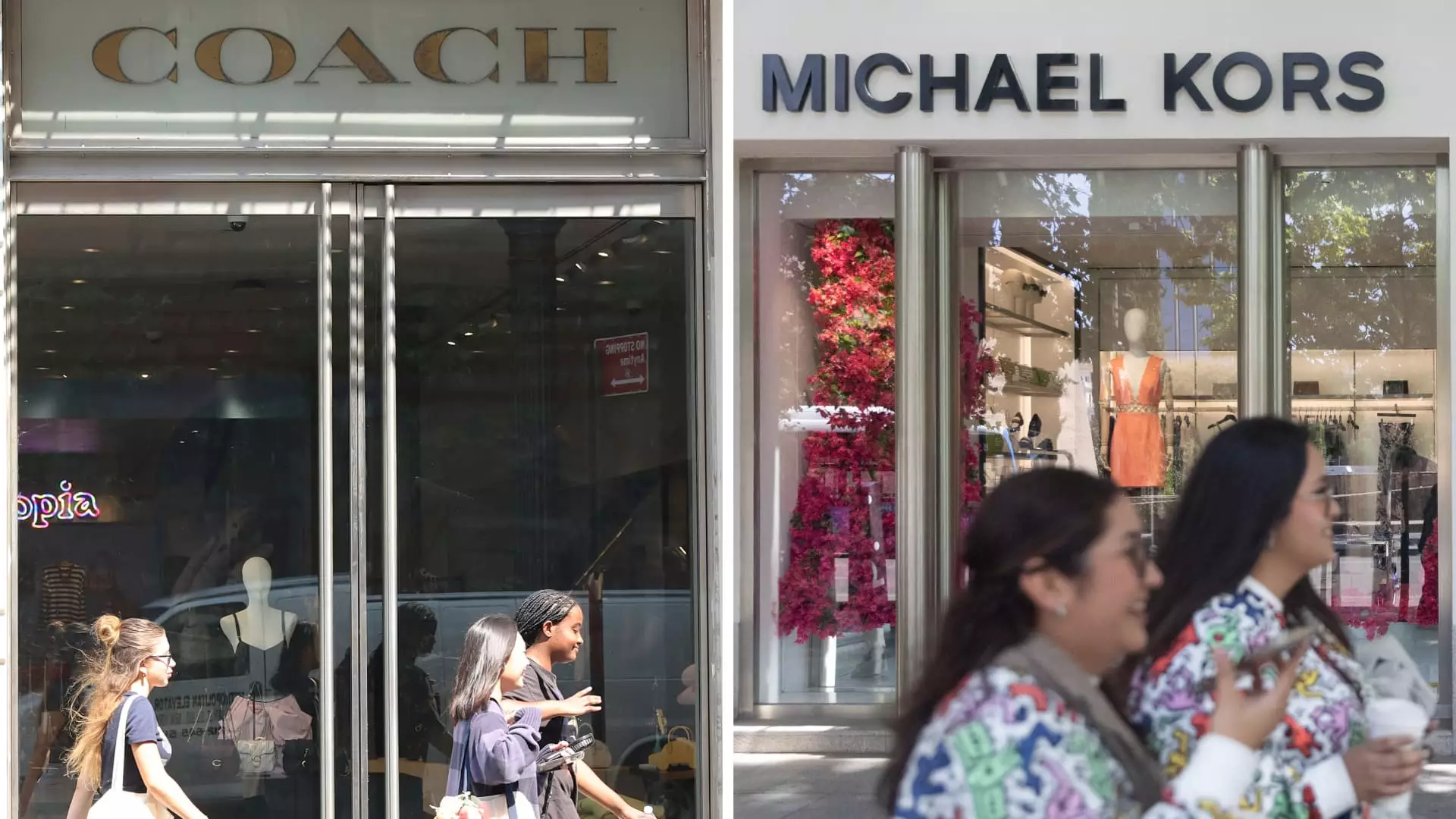In a significant ruling from the federal judiciary, Judge Jennifer Rochon has halted Tapestry Inc.’s acquisition of Capri Holdings, a decision that reverberates across the luxury fashion landscape in America. The merger sought to unite two formidable entities—Tapestry, with its established brands like Coach, Kate Spade, and Stuart Weitzman, alongside Capri’s storied labels like Versace, Jimmy Choo, and Michael Kors—into a single powerhouse valued at approximately $8.5 billion. However, the implications of such a merger have triggered intense scrutiny and ultimately led to intervention by the Federal Trade Commission (FTC).
At the core of Judge Rochon’s decision to grant the FTC’s motion for a preliminary injunction lies a complex interplay of legal and economic theory. The FTC contends that the merger would be detrimental to consumers by limiting access to affordable handbags, potentially increasing prices by reducing competition and fostering a less competitive environment for employees, thereby affecting their salaries and benefits. Tapestry, conversely, argues that the merger would enhance competitiveness, offering consumers improved products and rapid response to market trends.
The question of competition within an industry can often be nuanced. In the fashion world, where trends appear to shift momentarily—thanks in part to social media platforms such as TikTok—stakeholders including consumers may find themselves facing a paradox. Tapestry insists that this merger would strengthen its ability to innovate and cater to an ever-evolving consumer base. By contrast, the FTC views the potential for diminished competition as an immediate risk that could lead to consumer harm, emphasizing that the preservation of competitive dynamics outweighs potential future benefits of the merger.
The market’s reaction to the court ruling provides a vivid illustration of investor sentiment surrounding the future of Tapestry and Capri. Following the ruling, Tapestry’s shares surged by approximately 10%, indicating investor confidence in the company’s decision to challenge the injunction. In stark contrast, Capri’s stock plummeted nearly 50%, reflecting mounting fears about its profitability and overall market position in the absence of the merger.
Financial repercussions extend beyond immediate stock performance. As part of the merger agreement, Tapestry previously consented to cover expenses borne by Capri if regulatory approval was denied. This ‘termination fee’ structure, allowing for payments ranging between $30 million and $50 million to Capri, underscores the high stakes involved in this acquisition that risk leaving Capri at a financial disadvantage should the merger proceed no further. Additionally, the exorbitant $240 million breakup fee that Capri would owe Tapestry if it terminated the merger heightens the tension between the two companies.
The ruling is a product of a broader trend in the Biden administration’s approach to antitrust laws, particularly under the leadership of FTC Chair Lina Khan. By blocking such high-profile mergers across several industries—including technology and grocery—an adaptive framework for consumer protection is being more rigorously enforced. Khan’s administration is indicative of a reorientation towards preserving competitive markets, reflecting consumer trends and price sensitivity in light of recent inflationary pressures.
This ruling is particularly pertinent as consumers navigate turbulent economic times characterized by inflation. Political figures across the spectrum have been vocal about economic policies aimed at curbing inflation, with both parties promoting measures that protect consumers. The impulse of the FTC to safeguard competitive landscapes resonates with heightened consumer awareness and sensitivity towards prices.
Looking forward, Tapestry’s plans to appeal the preliminary injunction will be closely monitored. The outcome of this legal battle will not only determine the fate of the merger but will also provide insights into the regulatory environment for future mergers in various sectors. A ruling in favor of Tapestry could set a precedent that may embolden more companies to pursue significant mergers, whereas a sustained injunction would reinforce the FTC’s current stance on consumer protection and market competition.
The implications extend beyond mere corporate interests; they encapsulate a broader conversation regarding market dynamics and consumer rights. In a world where luxury brands can dictate marketplace trends, the question of consumer access, pricing, and choice continues to loom large. As stakeholders in this space evaluate the aftermath of this ruling, it remains clear that the complexities of corporate mergers and acquisitions will persist as a focal point of legal and economic discourse in the years to come.

